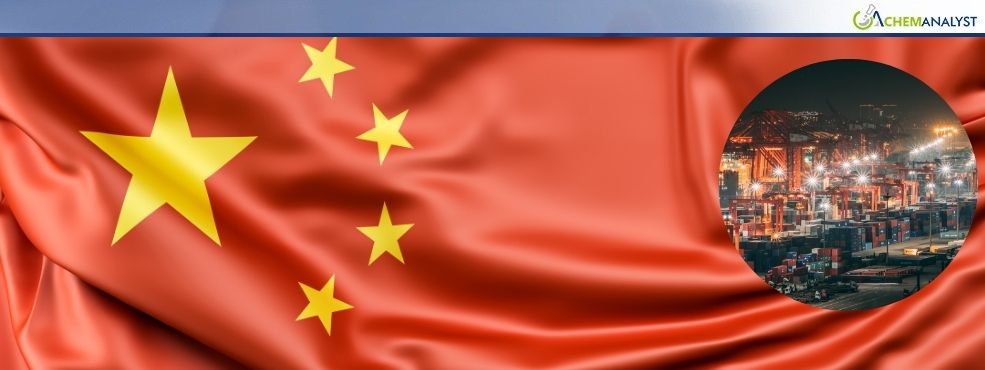Welcome To ChemAnalyst

China is the linchpin of the global rare earth element (REE) industry, accounting for nearly 60% of worldwide rare earth production and over 90% of the refining capacity.
Overview: China’s Dominance in Rare Earths and the Significance of Yttrium
China is the linchpin of the global rare earth element (REE) industry, accounting for nearly 60% of worldwide rare earth production and over 90% of the refining capacity. Yttrium, a heavy rare earth element, is particularly significant due to its use in phosphors for LED displays, superconductors, aerospace alloys, and defense systems. While not as well-known as neodymium or dysprosium, yttrium’s value lies in its high-performance characteristics for electronic and military-grade applications. The Chinese government's decision to tighten export controls—requiring special licenses as of April 4, 2025—has sent ripples through global supply chains, especially in regions highly dependent on imported rare earths.
North America: Economic Shock and Policy Response
North America, particularly the United States, is facing a critical challenge as over 61% of its rare earth imports come from China. The yttrium ban has directly impacted American high-tech and defense sectors. The restrictions are already having an effect on American automakers. A rare-earth scarcity caused Ford to temporarily halt production of its Explorer SUV at its Chicago facility in May. Companies such as Tesla and Lockheed Martin report potential production delays due to limited supplies of yttrium-based materials. Despite having the Mountain Pass mine in California, the U.S. lacks domestic refining capacity and sends extracted rare earths to China for processing—a vulnerability now laid bare. In response, the U.S. government has activated the Defense Production Act to prioritize domestic production and initiated partnerships with countries like Canada and Australia. Major federal grants are being allocated to build local processing facilities and support R&D into rare earth substitutes.
Economic Impacts on the European Union (EU)
The European Union, which was previously relied on China for 98% of its rare earth element (REE) imports and is currently reliant for 46.3%, is now facing substantial economic and industrial disruption as a result of China's yttrium export ban. This approach has sent shockwaves across vital EU sectors including as electric vehicles, renewable energy, aerospace, and military, with German automakers threatening facility closures and electronics firms grappling with rising costs and unstable supply chains. The challenges of acquiring export licenses have not only slowed output but also increased yttrium prices by up to tenfold. The EU Chamber of Commerce has expressed concern about the extended clearance timeframes, while policymakers are increasingly concerned about the bloc's reliance on Chinese supply chains and the erosion of fair competition. In response, the EU is stepping up attempts to restructure its sourcing strategy with programs such as the European Raw Materials Alliance (ERMA) and the Critical Raw Materials Act, which target alternative suppliers in Canada, Australia, and portions of Africa. Lynas Rare Earths in Malaysia and mining operations in Sweden and Greenland are gaining traction, as is rising investment in recycling and vertical integration to strengthen domestic refining capabilities. The EU also advocates for stronger support mechanisms like as subsidies, public-private partnerships, and improved stockpiling techniques. Looking ahead, China's export curbs are projected to irreversibly change the rare earth market, pushing the EU to incorporate raw material security into its overall economic and environmental strategy. By 2026, this might result in tougher mining rules, new financing for alternative materials research, and policies promoting supply chain transparency and circular economy practices. The geopolitical consequence is as substantial, widening schisms in EU-China relations and driving Brussels to pursue tighter ties with Indo-Pacific democracies such as Japan, India, and Australia.
Asia-Pacific (APAC): Regional Realignment and Competitive Shifts
In the APAC region, Japan and India are feeling the brunt of the ban in different ways. Japan, with 60% of its rare earth supply sourced from China, is facing steep production hurdles in electronics and automotive industries. In response, Tokyo is intensifying its investments in Lynas and seeking joint ventures in Vietnam and Africa. Meanwhile, India is particularly vulnerable due to its booming automotive sector and ambitions for EV leadership. Chinese companies make most of the rare earth materials that Indian automakers and clean energy companies need. Export limits also hurt numerous businesses throughout the world by making it harder for them to get the materials they need. Companies like Maruti Suzuki and Bajaj Auto are reporting difficulties in obtaining magnetic materials essential for electric motor production. The Indian government is ramping up its efforts to develop a rare earth magnet industry, offering incentives to private companies and fostering technology transfer from international allies. If successful, this could mark the start of India's journey toward becoming a regional processing hub.
Conclusion: Toward a Multilateral Solution
China's export prohibition on REE has a wide range of effects on global regulatory frameworks, supply chain resilience, economic operations, and geopolitical ties. The U.S. is rapidly achieving rare earth independence, the EU is speeding up domestic resource initiatives, and APAC nations are looking into diversification. The essential necessity for a global framework centered on common refining infrastructure, strategic reserves, and sustainable rare earth sources is highlighted by this collective disruption. Once an obscure industrial input, rare earth elements are expected to become a key component of global economic and security strategy in the years to come.
We use cookies to deliver the best possible experience on our website. To learn more, visit our Privacy Policy. By continuing to use this site or by closing this box, you consent to our use of cookies. More info.
